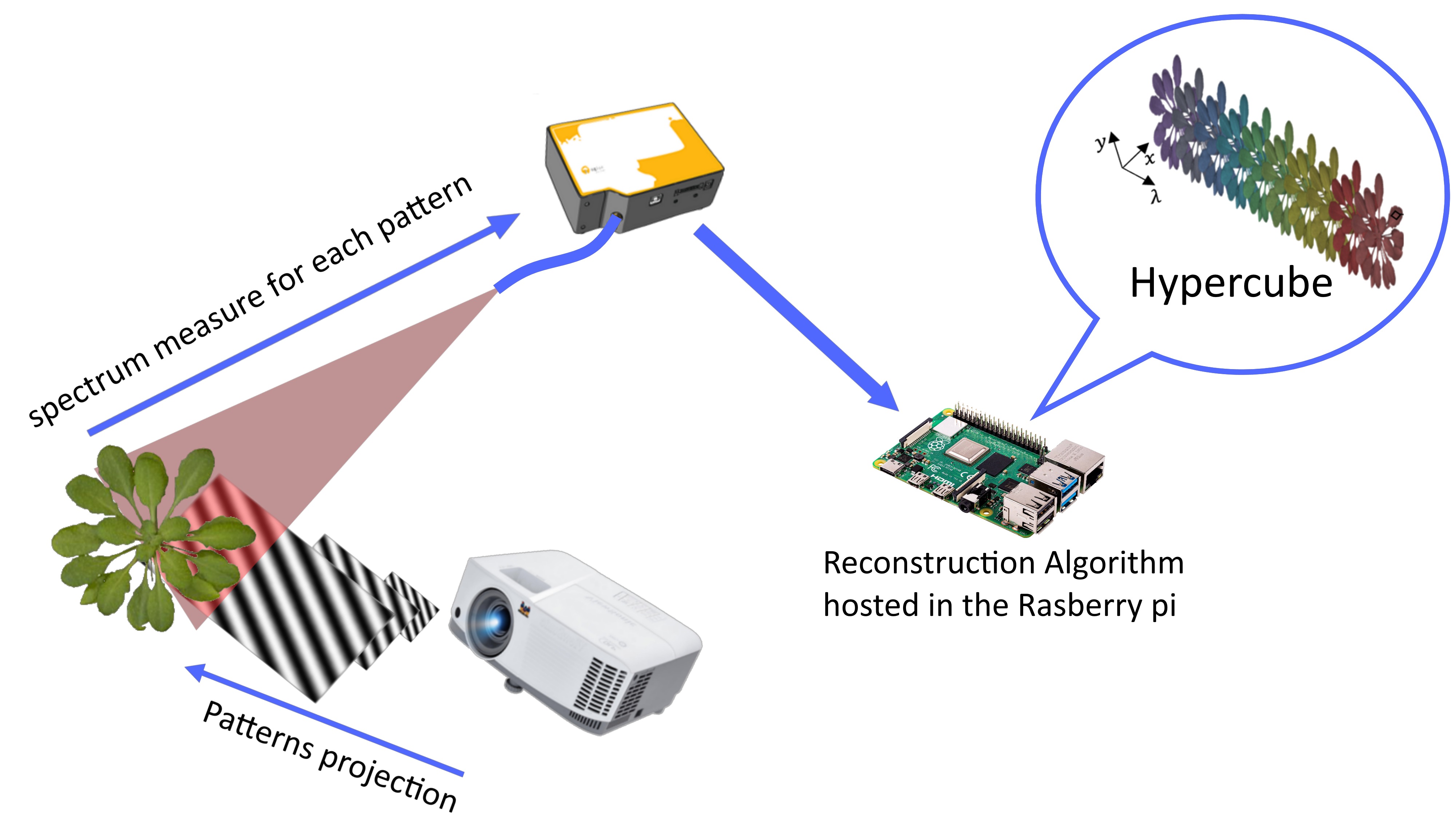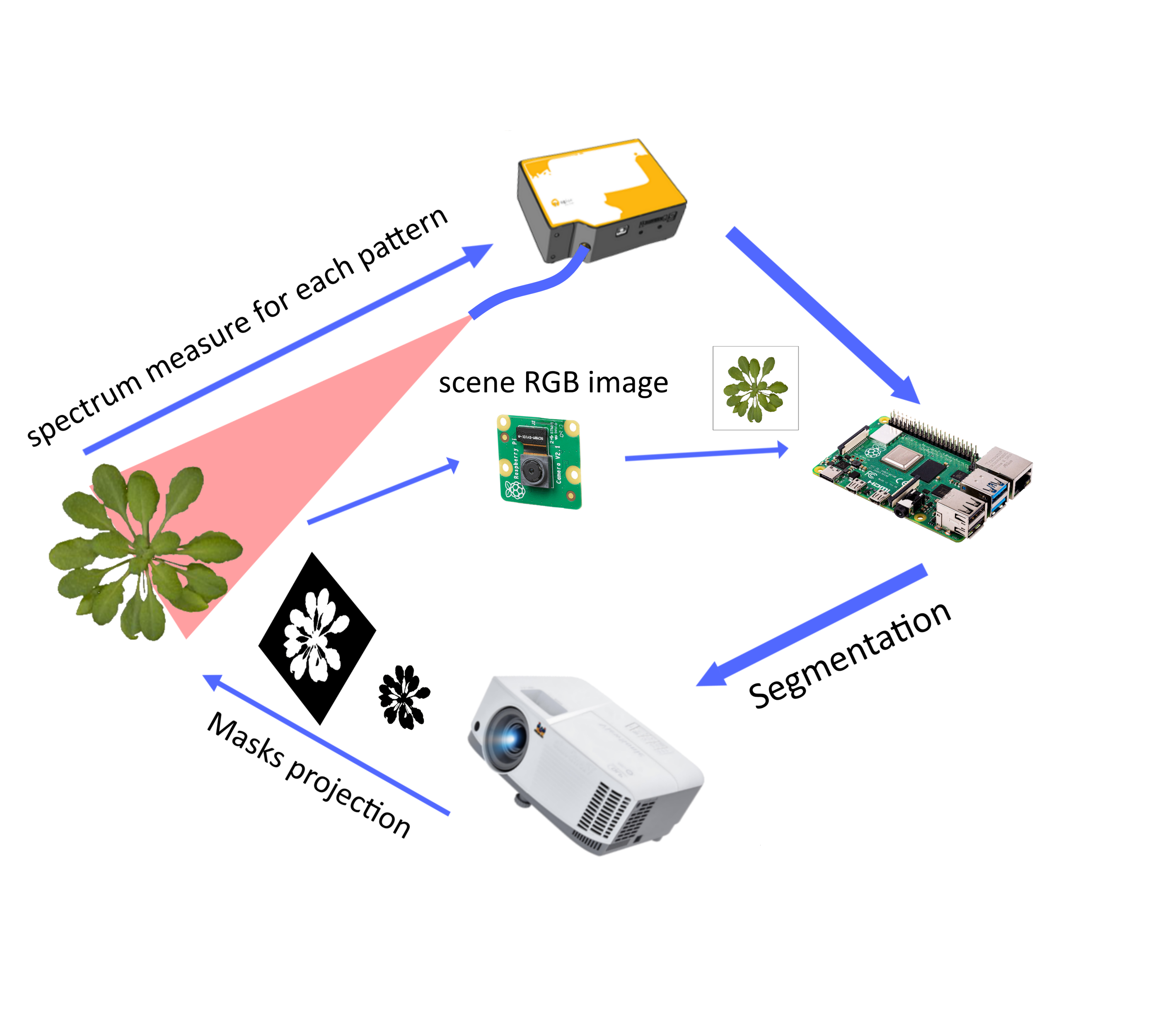-
Notifications
You must be signed in to change notification settings - Fork 6
3. ONE‐PIX measures principles
Two measurement strategies are currently implemented in the ONE-PIX. The Fourier domain integral scanning(FIS) method is used to measure complete scene hypercubes. And the Homogeneous Area Scanning (HAS) method makes it possible to measure the spectra of homogeneous areas of the scene.
See a video illustrating these two methods here

The FIS measurement method is based on the principle of single-pixel imaging. The video projector from the ONE-PIX kit will project structured light patterns onto the scene. For each of them a spectrum measurement will be carried out by the spectrometer. The synchronization of the spectrometer measurements and patterns projections is ensured by the Raspberry pi board. It also ensures the reconstruction of the hypercube from successive measurements from the spectrometer.
To quickly launch a FIS measurement see here.For more information about the measurement interface see here
This interface has been designed to easily integrate community developments. in fact it is possible to implement new spectrometer models (more information here) or new orthogonal pattern bases (more information here)

The HAS method allows to measure mean spectra from homogeneous spatial areas of the scene.
The various steps involved in a measurement are as follow:
- An RGB image of the scene is captured with the ONE-PIX kit camera.
- The image is then segmented with an algorithm hosted on the Rapsberry pi in order to create clusters images
- These masks are projected onto the scene
- For each projection the spectrometer makes a measurement
Thus the resulting measurement is a segmented image with a spectrum for each cluster.
To launch a measurement with the HAS method it is possible to use the HAS interface.
Currently two segmentation algorithms are implemented.
- An unsupervised segmentation algorithm based on the Kmeans method carried out on the RGB image converted to LAB color space.
- A manual segmentation algorithm based on the GitHub reposite labelme.